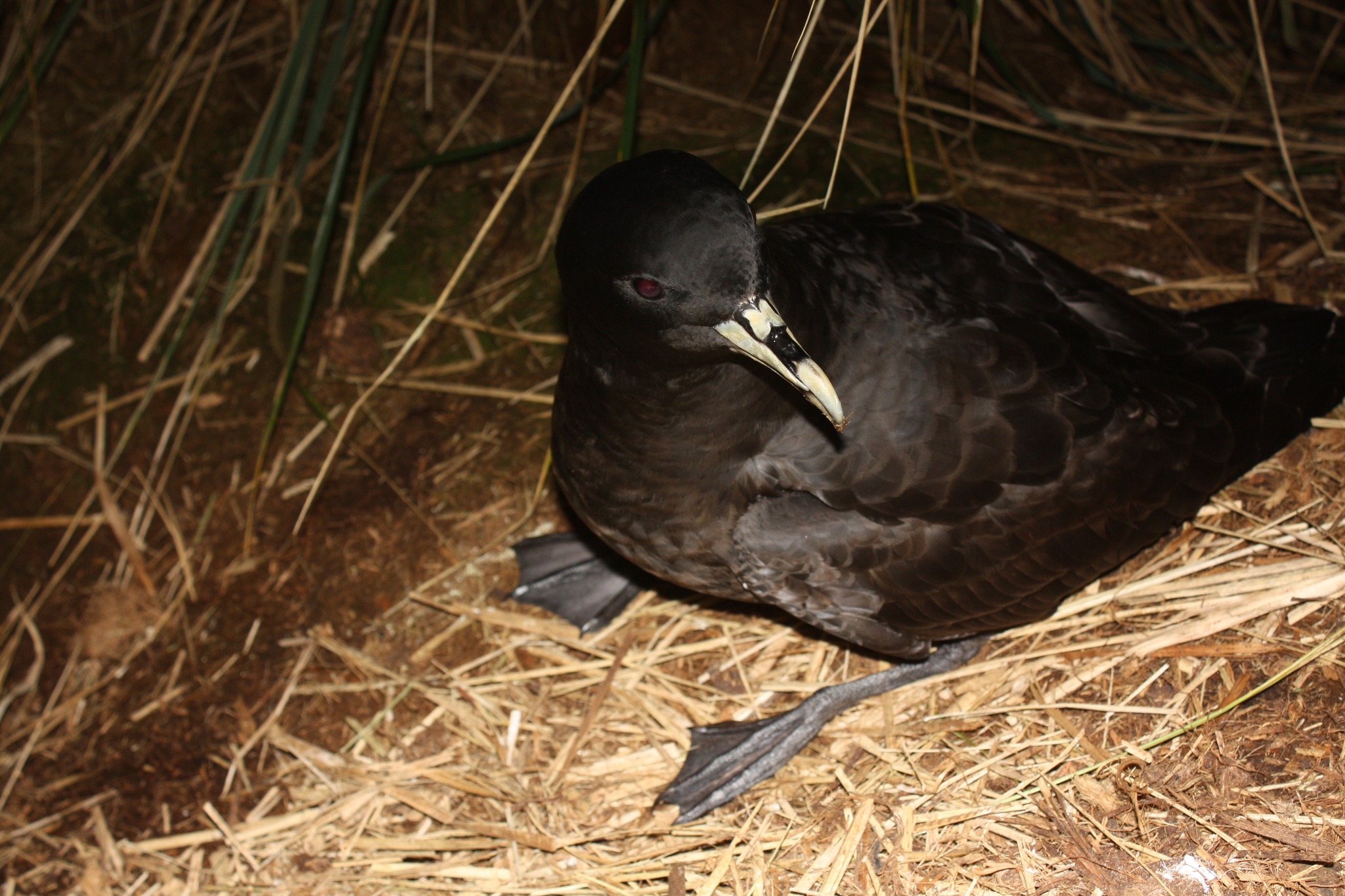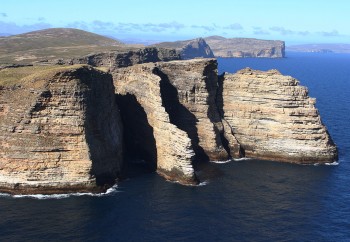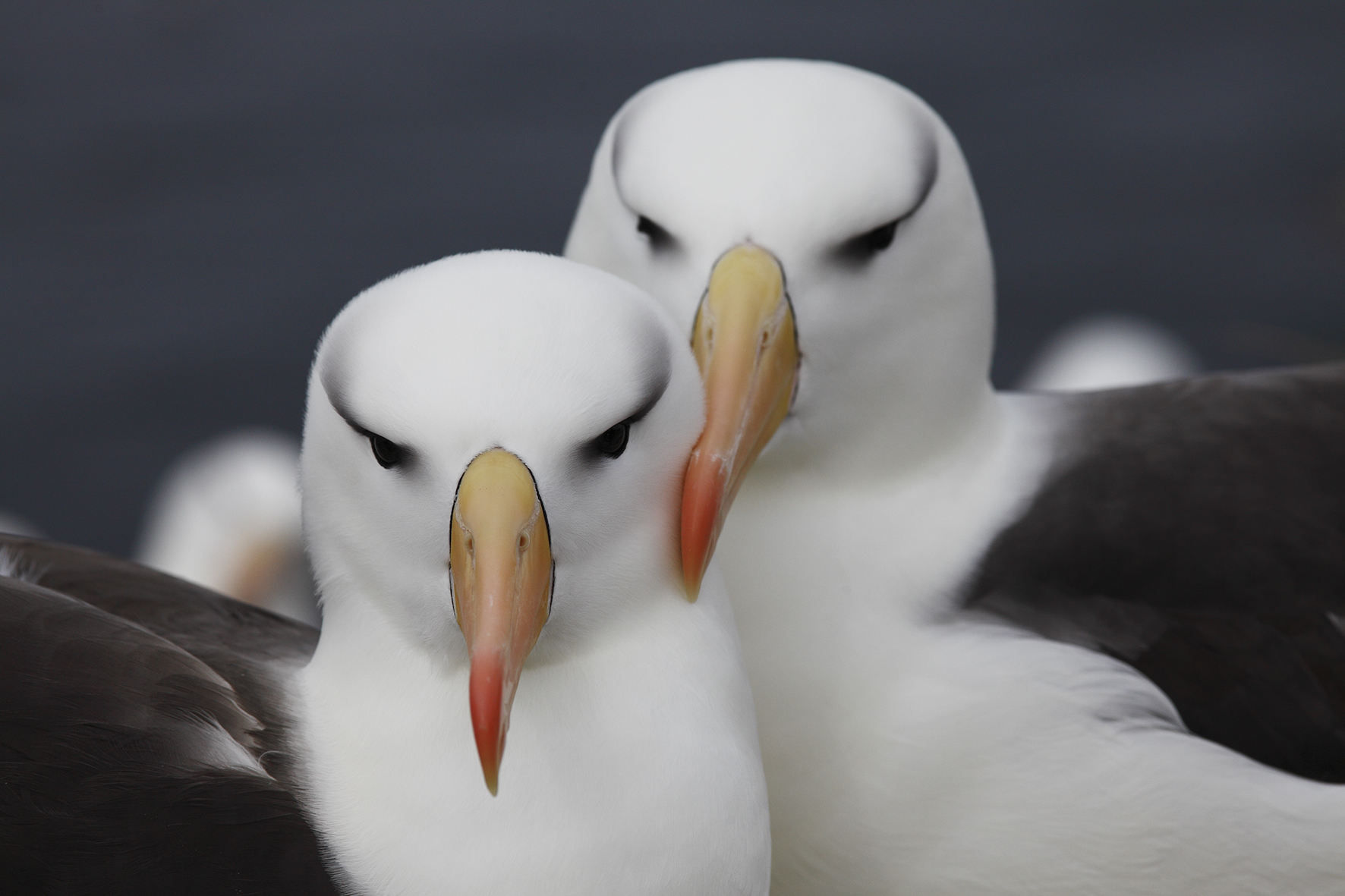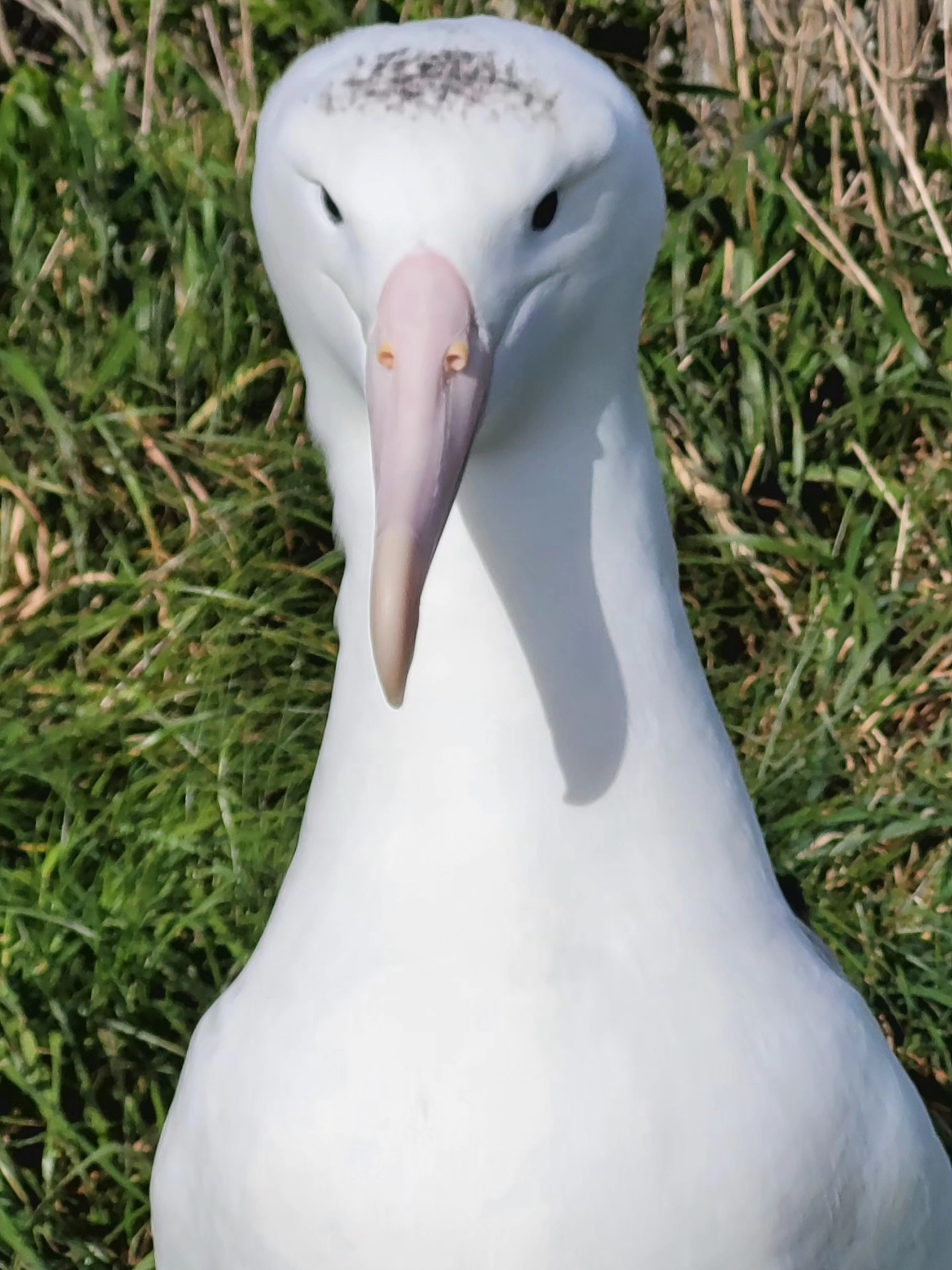 “New season’s arrivals stand out from the remaining breeders who are still fledging chicks as they have a pale bill unlike the bright pink bill of a parent who has a chick to feed, and they often have dark feathers on the head which will fade during the summer”, photograph by Sharyn Broni
“New season’s arrivals stand out from the remaining breeders who are still fledging chicks as they have a pale bill unlike the bright pink bill of a parent who has a chick to feed, and they often have dark feathers on the head which will fade during the summer”, photograph by Sharyn Broni
In what has become an established tradition, bells will be ringing today in Dunedin on New Zealand’s South Island to mark the first Endangered Northern Royal Albatross Diomedea sanfordi to return to start the 2025/26 season in the Taiaroa Head/Pukekura colony. The colony is the only one on the mainland of New Zealand and is one of the very few in the world where breeding albatrosses can be viewed by the general public without joining a sea-going - and expensive - expedition.
“Our first returning albatross for the new breeding season has been sighted! KM (black metal) a 30-year-old male who is a very successful breeder raising 12 chicks since 2003 with the same partner. KM was seen on the headland by Department of Conservation rangers on 14th September. KM hasn’t been seen for one year as [it has] been circumnavigating the Southern Hemisphere and has now returned to start a brand-new season.” The bird’s long-time mate is WOK and they fledged a chick in 2024. KM has an injury on the other leg which means he cannot have the usual colour bands.
“Bell ringing will take place at 12:30 pm NZST Thursday 25th September. The city churches will join us in ringing the bells but as its school holidays in New Zealand, we are unsure how many schools will be able to join us this year, so we’d love lots of other bell-ringers throughout Dunedin and afar to join in and ring their bells as well to help us celebrate! Don’t have a bell? Maybe you could set your phone to ring, sing a song or clap! We love original ideas and lots of fun! If you’re in Dunedin join us at the centre for a bell-ringing ceremony.”
The Northern Royal Albatross is, when successful, a biennial breeder. The return of adults for a new breeding season overlaps with the fledging of chicks from the previous season, including the chick that has been followed by a 24-hour live-streaming “Royal Cam” since hatching on 28 January this year. It fledged on 17 September at 232 days of age (and a mass of 7.7 kg, up from 286 g at hatching), with a successfully working GPS satellite tracker attached. A total of 18 trackers, nine on females and nine on males, have been attached to the back feathers of 2024/25 chicks, now fledging.
Information from an online Royal Cam Community Discussion group, Facebook and from elsewhere.
John Cooper, Emeritus Information Officer, Agreement on the Conservation of Albatrosses and Petrels, 25 September 2025

 English
English  Français
Français  Español
Español 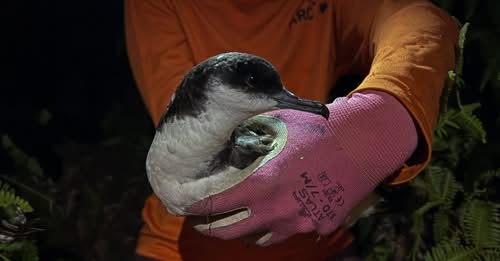
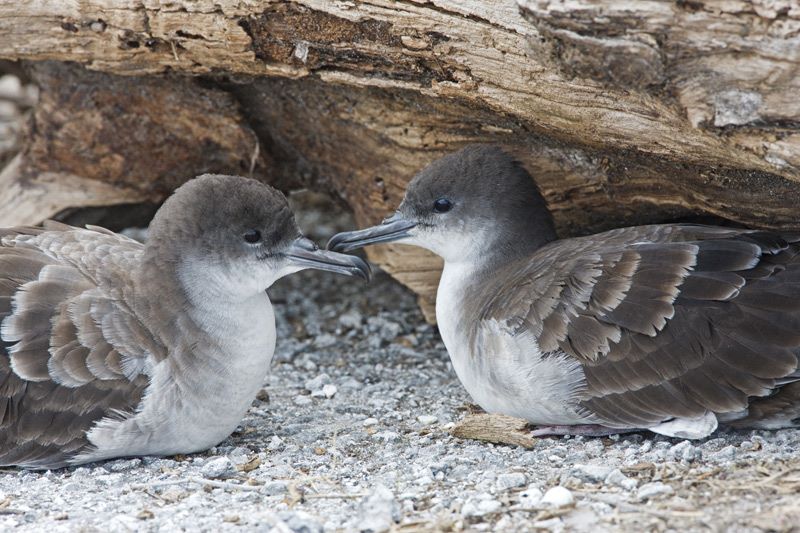 Wedge-tailed Shearwaters, from the Pacific Islands Avian Health & Disease Program
Wedge-tailed Shearwaters, from the Pacific Islands Avian Health & Disease Program
